A curated collection of free vintage vegetable prints. These wonderful old illustrations of vegetables would be fun to download and frame for kitchen art. They would also be great for decoupage projects.
I love to post seasonal collections of vintage images on Picture Box Blue. As it is currently autumn/fall and harvest time, I thought it would be fun to add some vegetable art to the collection.
There is already a very popular collection of antique watercolor fruit prints from the Pomological collection on the site. Also, some amazing vintage fruit and vegetable posters by Adolphe Millot. These vintage vegetable prints will compliment them.
The word vegetable has several meanings, the most basic of which is any part of plants that can be eaten by humans or animals.
Culinary experts like to distinguish vegetables botanically from fruits. By saying that if it contains seeds, then it is a fruit and not a vegetable. But this causes confusion, as vegetables such as tomatoes, courgettes, eggplants and pumpkins contain seeds so should strictly be classified as fruits.
However, you define vegetables, they are an extremely important part of the human diet. Vegetables are cultivated all over the world, China is the largest grower.
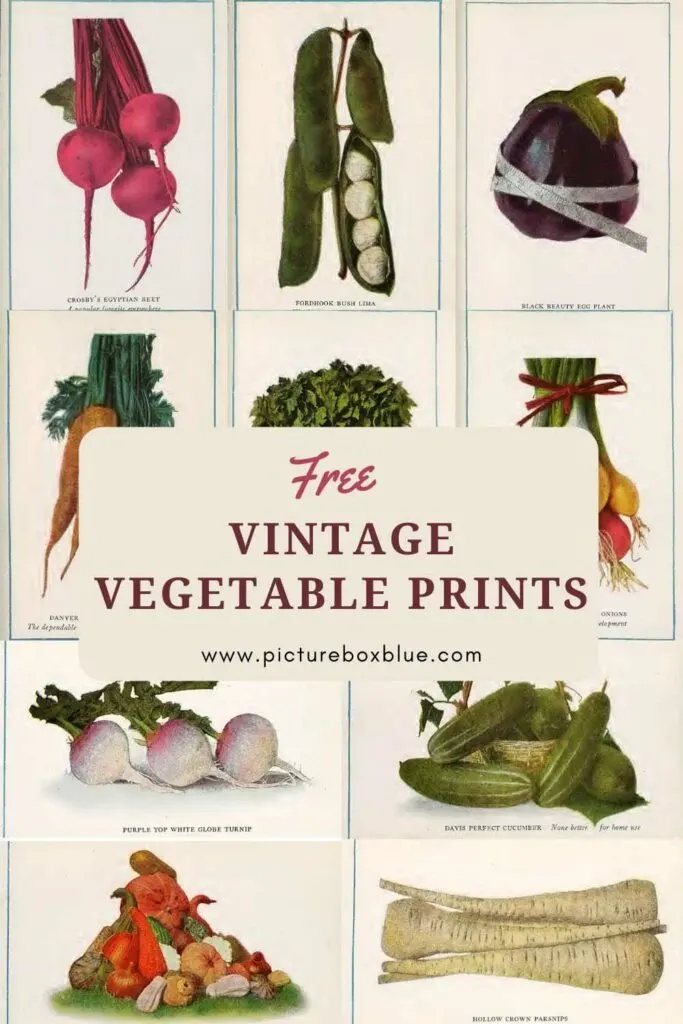
The Vegetable Prints
All the prints are from the book “Home vegetable gardening from A to Z, with special reference to Pacific coast conditions” published in 1918 and written by Adolph Kruhm.
With each vegetable drawing, I have also added a little text from the book.
To download the vegetable drawing that you want, click on the title above that drawing. It will open in a new window in your browser. Click on that image, with your mouse, and you will have the option to save the image to your device.
1. Asparagus Illustration
” A delicious vegetable, yielding one of the best spring, delicacies year after year, providing it is properly cultivated and cared for. Equally easy to grow from either seeds or roots, but time is saved by starting the asparagus bed with two-year-old roots.”
Kruhm, also describes asparagus as a hardy vegetable suited to temperate zones. If probably managed, asparagus beds will do well for many years.
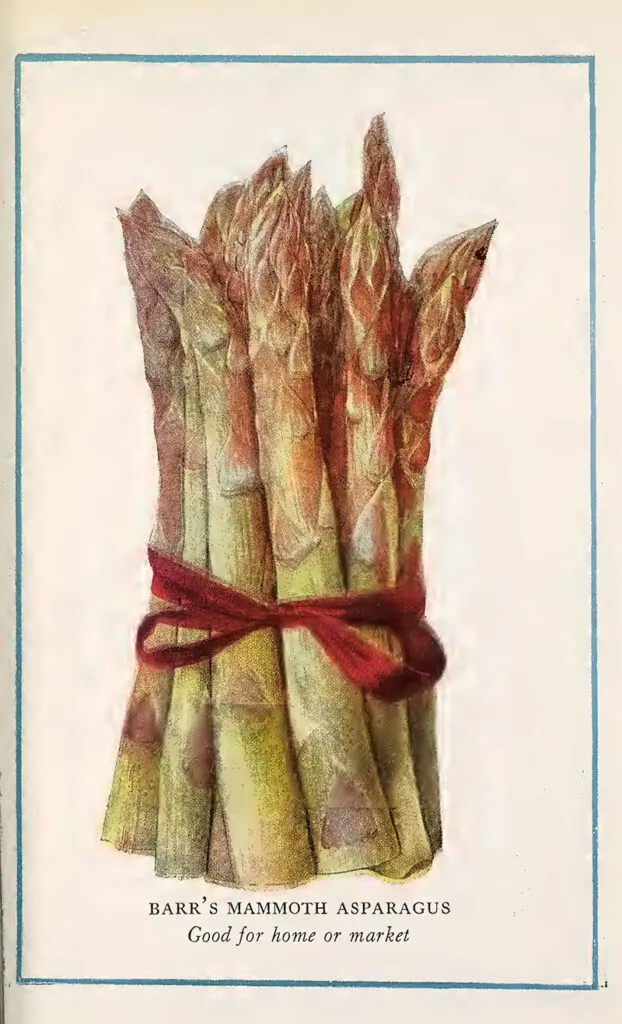
2. Brittle Wax Bush Bean Illustration
“Beans grow in any soil and everybody can grow them. They are distinctly a “warm weather” vegetable and should not be sown outdoors until the maple trees develop leaves. They have no insect enemies of any consequence and are one of the easiest vegetables to grow and harvest.”
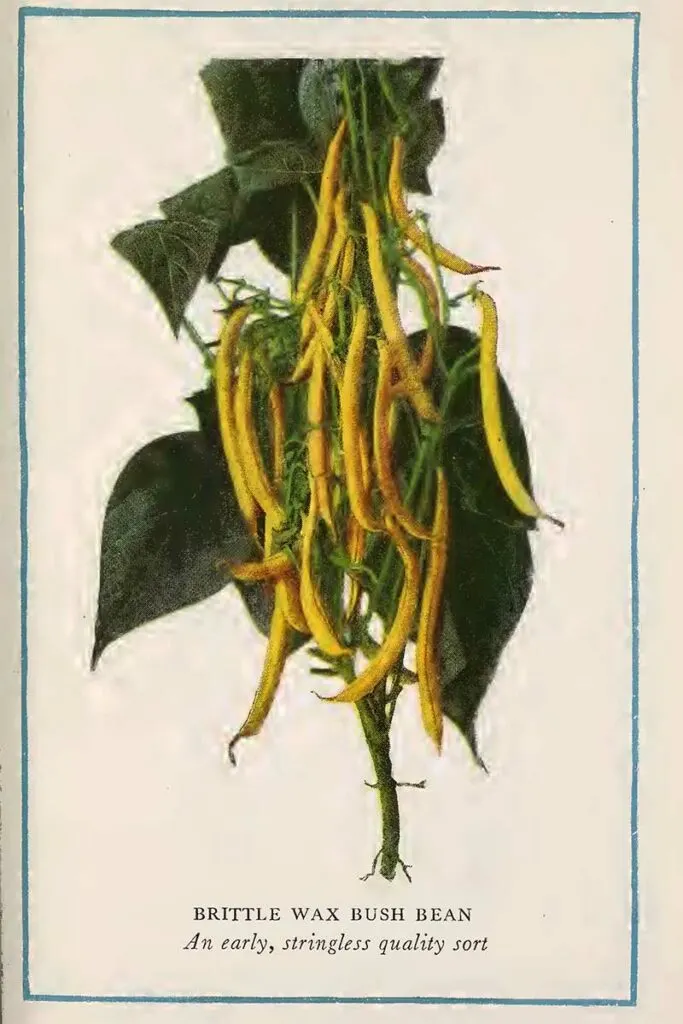
3. Fordhook Bush Lima Illustration
“Unlike other beans, they are used as “shelled” beans only, since their pods are unfit for eating. Bush Limas are likewise divided into several distinct classes, according to the beans they yield.
They greatly vary in size and quality, depending upon the sort you plant. All are of best quality if picked while quite young and while the beans are green“
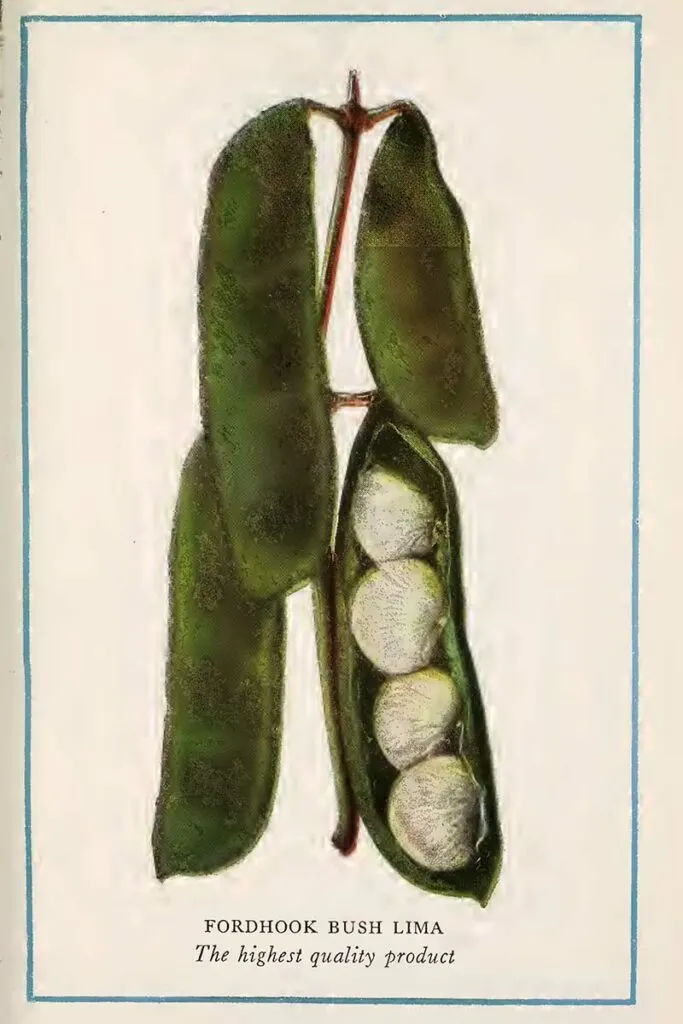
4. Crosby’s Egyptian Beets – Vegetable print
“Next to turnips, beets are the principal “root” vegetable for winter use. And as such, they enjoy far greater popularity in Europe than in America. They are easily grown in any soil, have no insect enemies of any consequence, are easily harvested and stored.
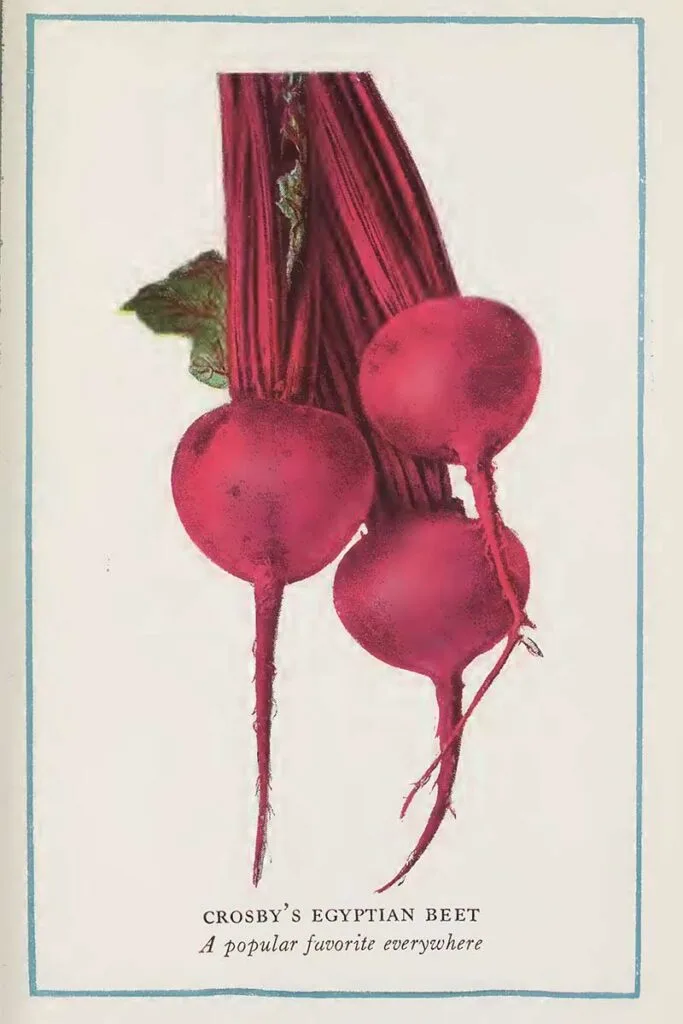
5. Brussel Sprouts – Vegetable illustration
“One of the least known members of the cabbage family and one of the most delicate and delicious in flavor. Can you imagine a cabbage plant which, instead of forming a head, grows a stalk about two feet tall, with the leaves set about two to three inches apart all around and up the stem? That is the way this vegetable grows and the “sprouts” develop where the leaves join the stalks.”
In the UK Brussel sprouts are an iconic vegetable to be served with the Christmas dinner. It’s a vegetable that can divide families, into Brussel sprouts lovers or haters! They get their name from the city of Brussels in Belgium.
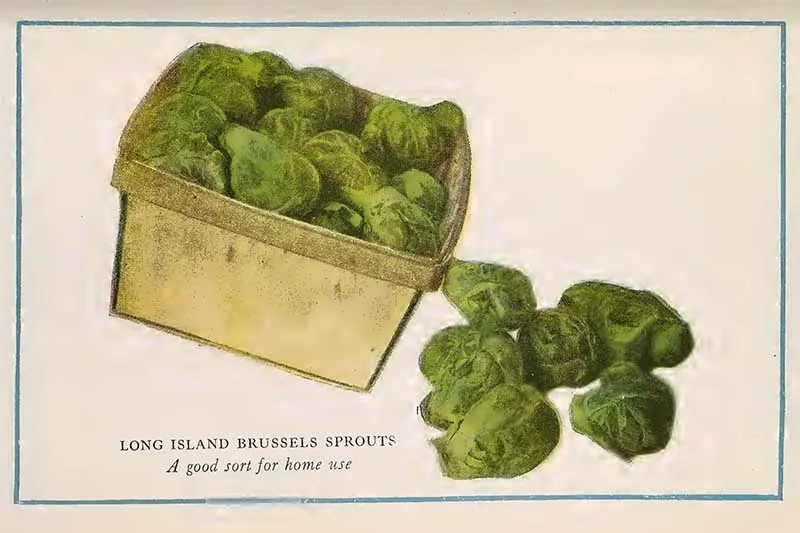
6. Cabbage – Vegetable Illustration
” As children of cold, moist climates, all cabbages thrive best in cool sections that enjoy an abundance of rainfall. The cabbage family is large, as a thorough study will reveal. The wild cabbage is the common ancestor of borecole, broccoli, Brussels sprouts, cauliflower, kale, kohlrabi, and many other popular vegetables.
Cabbages proper are divided into three classes, namely: “white,” or common cabbage, “savoy” or crinkly leaved cabbage, and red cabbage. Cabbage is one of the few vegetables that may be enjoyed year-round.“
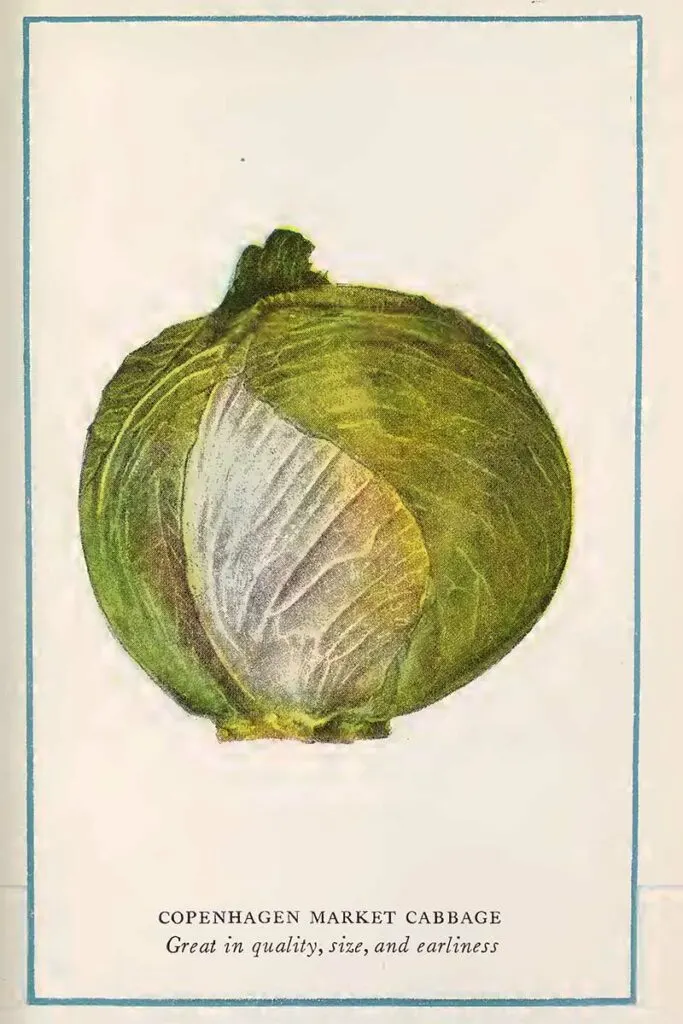
7. Carrot – Vintage illustration
“Centuries of strife and the need of storing food supplies against unfriendly winters have made carrots one of the main standbys among vegetables for winter use with European nations.
They certainly are a most wholesome and nutritious vegetable, easily grown, easily harvested, easily stored, and easily relished.“
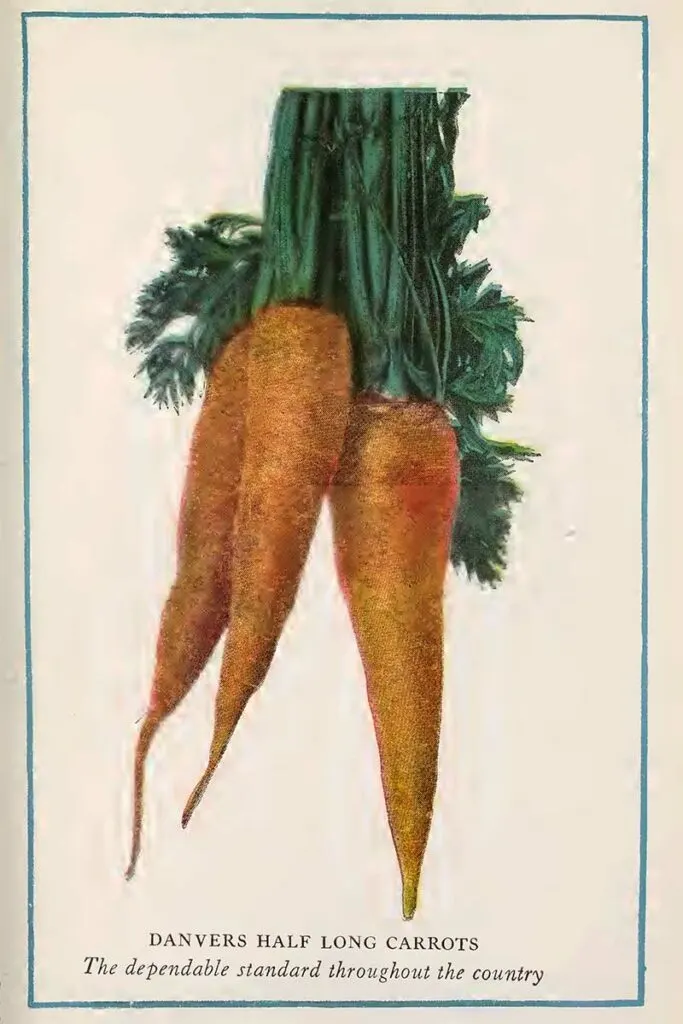
8. Cauliflower – Illustration
“Italians are said to have “discovered” cauliflower as a food plant. Dutch gardeners improved it, Danish gardeners perfected it, and to this day the finest cauliflower seeds come from Denmark because the climate of that country is nearly ideal for the development of this vegetable.
Cauliflower is a member of the cabbage family. Its “heads” are really a thick, fleshy mass of flower stems bleached white by overlapping outside leaves. They are of very delicate flavor and for this reason, are more highly prized and priced than common cabbage.
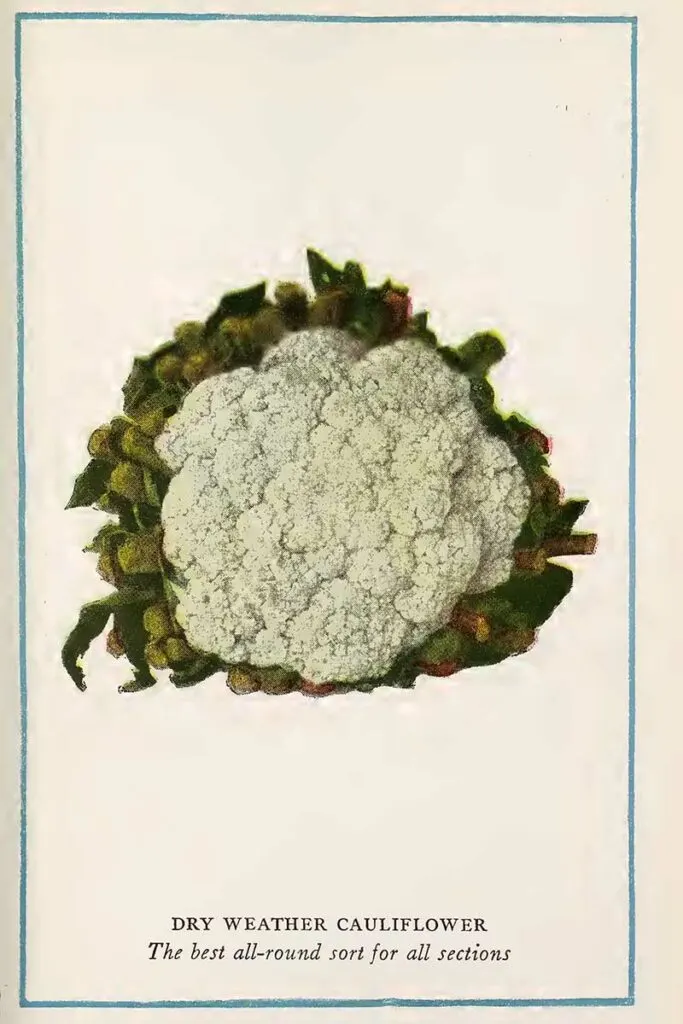
9. Celery – Vintage Illustration
“The use of celery as a vegetable and tonic is traceable to oldest times, since some of the old Greek poets, before Christ, considered it worthy of mentioning. It certainly is a fact that well-grown and prepared celery is a most acceptable article of diet and every American garden maker can grow it!
While the seeds require a long time to germinate, the newly born plants have a strong constitution. They grow well so long as they have an abundance of water.“
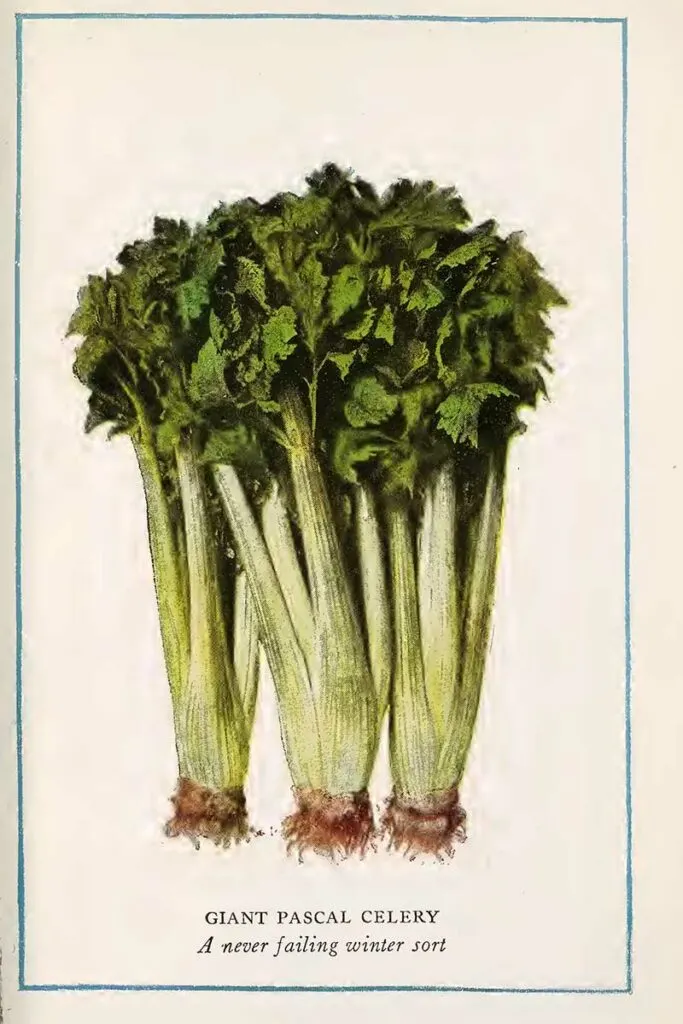
10. Corn – Sweet or Sugar
“In America corn is King because it is a true American vegetable. Corn was cultivated as a food in Mexico and South America before Cortez landed. Sweet corn is mentioned as far back as the end of the Seventeenth Century as a favorite food of the Indians of western New York. It surely thrives better in our country than any- where else. And in no other country does sweet corn reach the perfection as it does with us.”
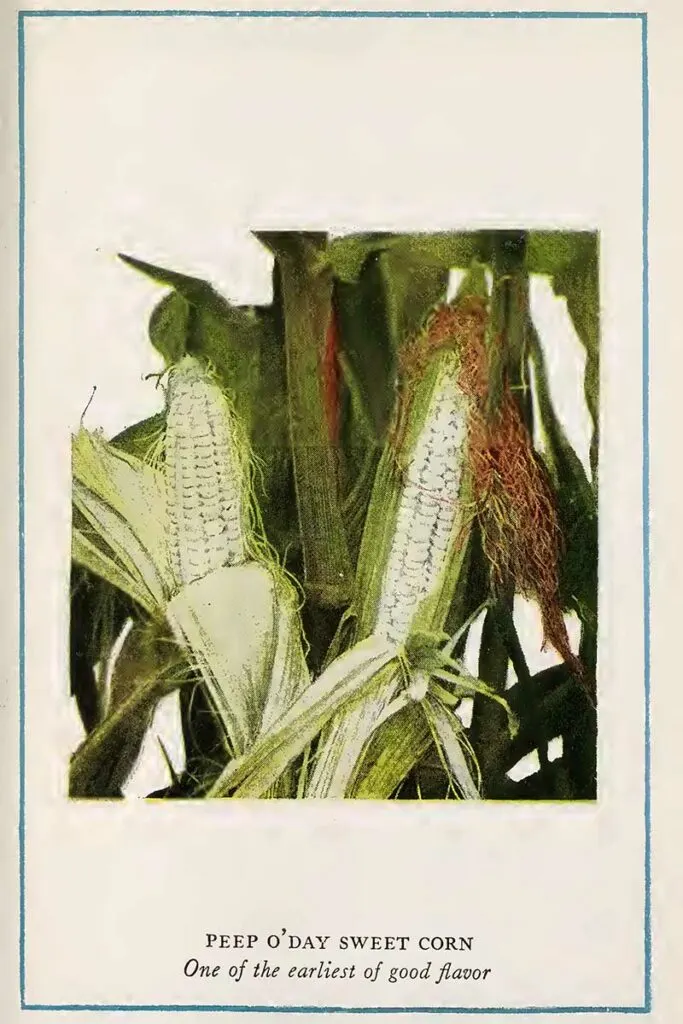
11. Cucumbers – vintage drawing
“Who does not know the handsome, dark green fruits which, sliced and seasoned, furnish us one of the coolest and most refreshing summer salads?
Cucumbers are a very easily grown vegetable. They require little or no care after the seedlings have outgrown the danger of being eaten by the little striped beetles which seem to prefer young cucumber seedlings to all other food.”
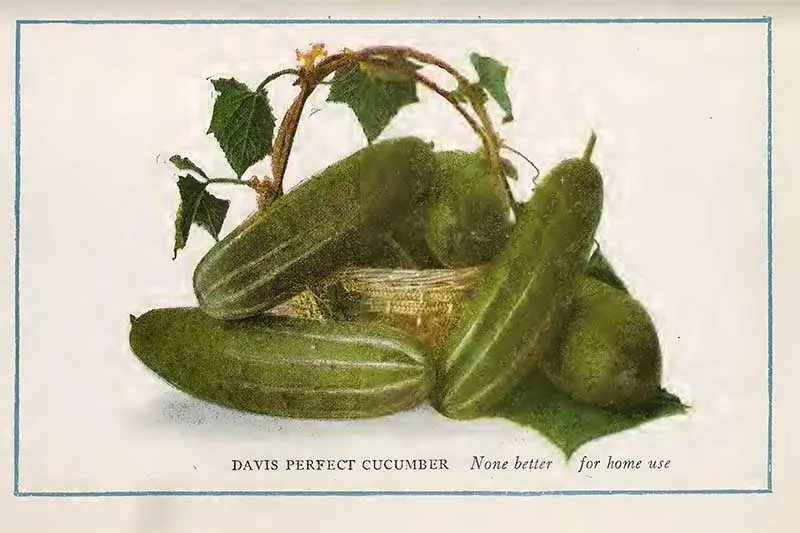
12. Eggplant – vintage drawing
“As a native of tropical climates, Eggplants thrive best in those sections that enjoy a long growing season as well as really warm weather during the summer months.
They grow to perfection from Florida north to Pennsylvania and west to Kansas, as well as on the Pacific Coast, but do not thrive so well farther north and in higher altitudes. Eggplants are members of the “Nightshade” family (Solanum) and as such, they are first cousins to the potato, tomato, pepper, etc“.
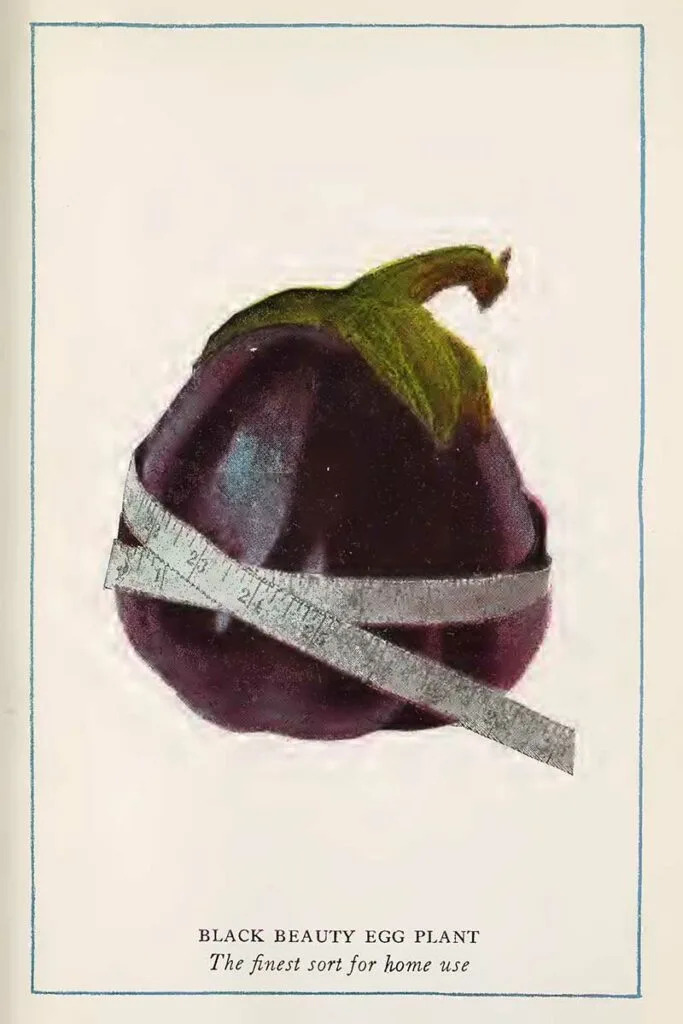
13. Kohlrabi – Illustration
“A most delicious member of the cabbage family grown for the fleshy portion of its stem which re- sembles a turnip-shaped root and forms on top of the ground. The general appearance of the young plant is that of a cabbage.
Kohlrabi develops very quickly from seeds and should be used while the bulbous stems average from two to three inches in diameter.”
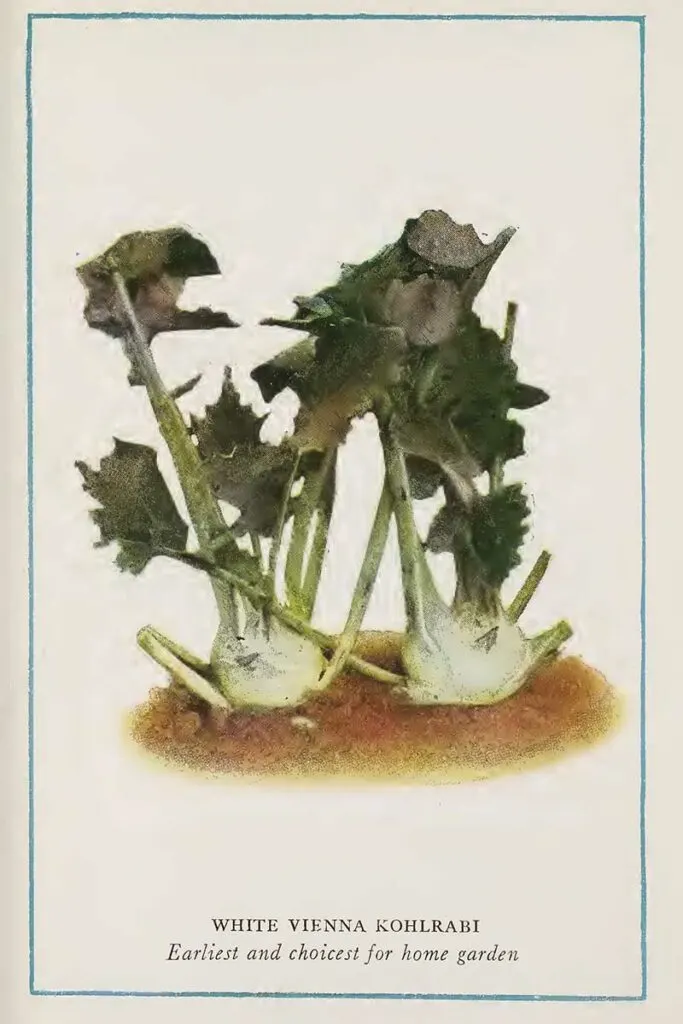
14. Lettuce – Illustration
“Everybody knows lettuce, but few people can ‘ grow it to perfection. While it is one of the easiest vegetables to grow, to grow it right, attention must be paid to certain details.“
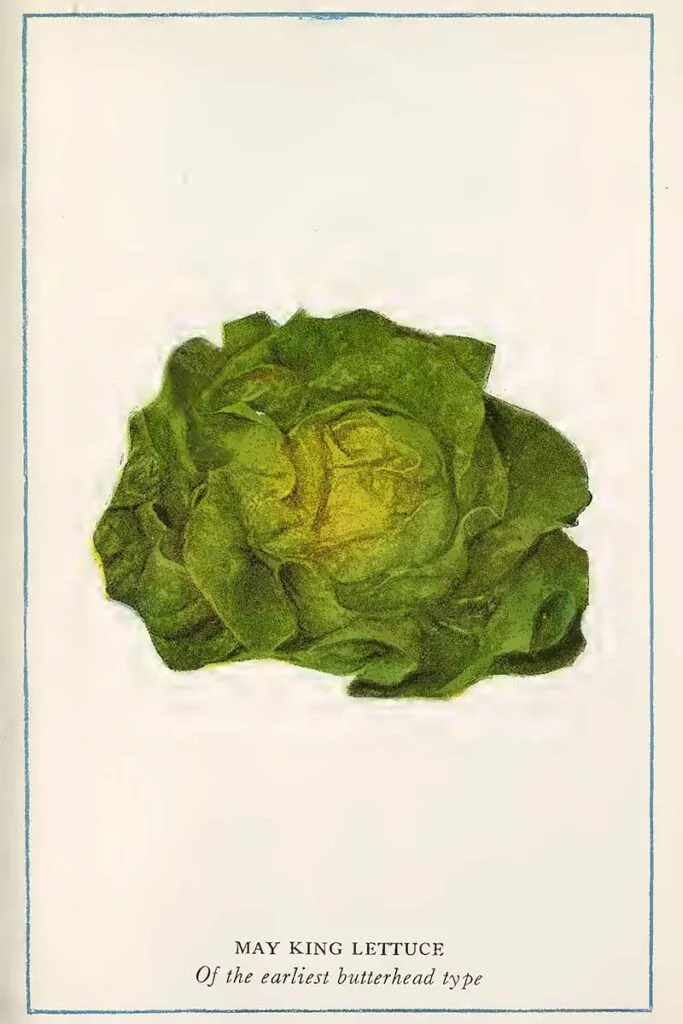
15. Muskmelon or Cantaloupe – Illustration
“Though a native of Asia and Africa, this delicious vegetable fruit finds a most congenial home in America, where, under favorable climatic conditions and with thorough care, it develops qualities far beyond anything known to the old world.
The fame of melons produced in certain sections of America has spread far beyond our boundaries. Melons have made Rocky Ford, Colorado, famous, and California’s Cassaba melons bid fair to eclipse even Rocky Fords.“
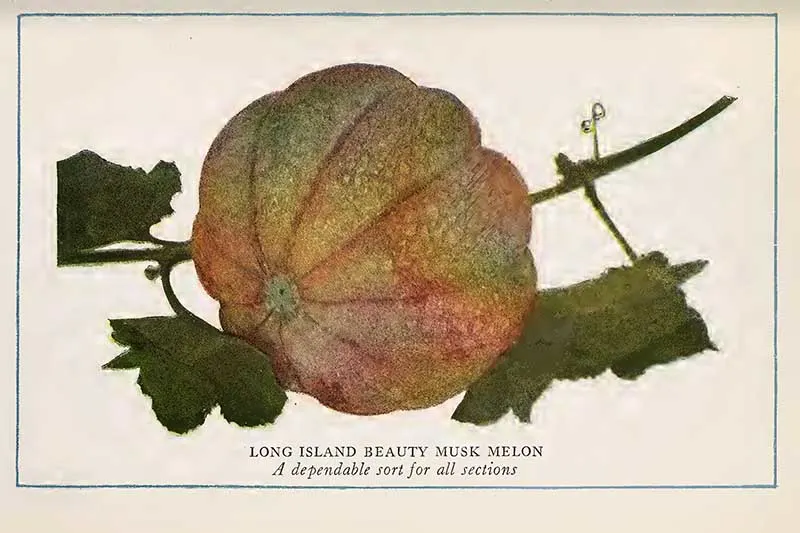
16. Watermelon – Drawing
“For thousands of years, natives of Africa and tropical Asia have known watermelons and cherished the fruits of wild kinds as one of nature’s gifts. Perhaps in no other country do they grow as perfectly as with us, and no country has paid more attention to developing this delicious vegetable fruit than our South.
Watermelons thrive anywhere where the temperature remains above sixty degrees for at least one hundred days.“
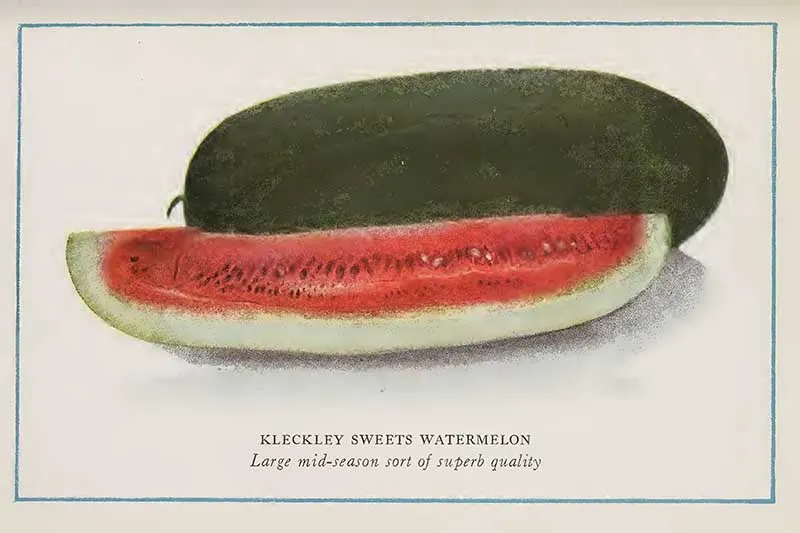
17. Onions – Vegetable Print
“Onions as food for mankind can trace their usefulness back to the dawn of civilization. History re- cords that laborers fed on bread and onions erected the Pyramids for the Pharaohs 4200 B. C. To this day onions are an important article of diet.
They are used largely for soups and stews, and the foreign element of our great cities is more quickly incited to riots by prohibitive prices for onions than by the absence of potatoes.”
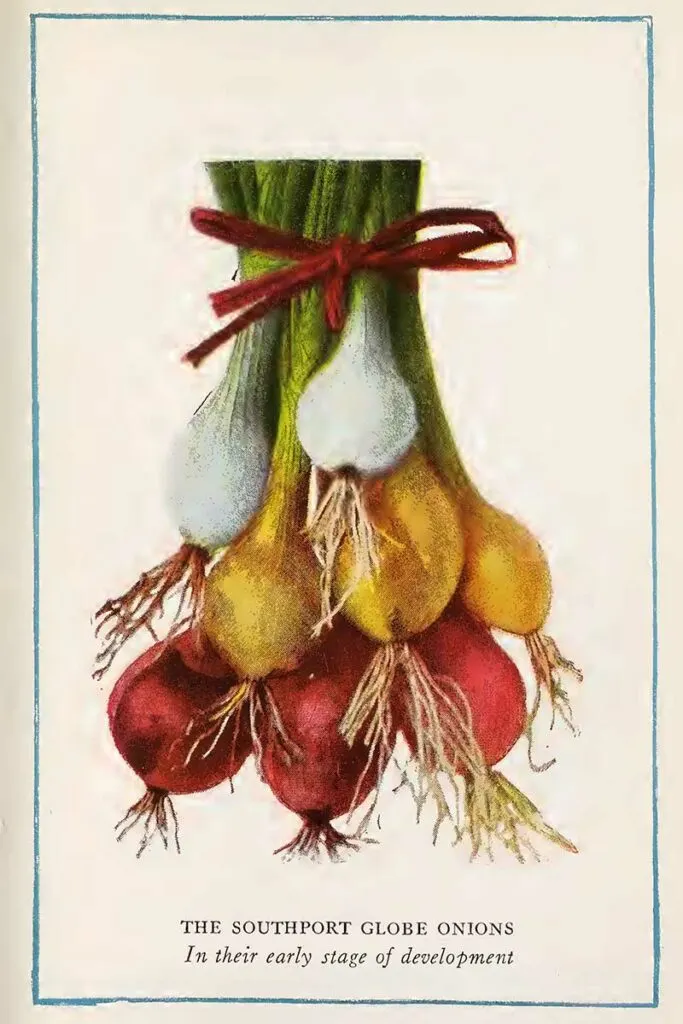
18. Parsnips – Illustration
“As a native of Great Britain and Central Europe, the parsnip has been appreciated in Europe as a food for people and cattle for centuries. It readily naturalized and became acclimated in this country and is highly esteemed as a winter vegetable, although we do not appreciate its value as rich food for cattle.
Parsnips are rich in sugar contents and it requires rich soil to grow them to perfection.“

19. Peas – Vegetable Print
“As one of the hardiest and most easily grown vegetables, these deserve a place in every home garden. Particularly in view of the fact that real quality peas can never be bought on market. However, it does not pay to grow them in very small gardens. Because considerable space must be planted to them so as to enable one to gather pods sufficient for a meal at one picking.
Besides, the crops from the space peas occupy are small when compared with crops other vegetables will yield from the same space. Peas thrive in almost any soil and climate.“
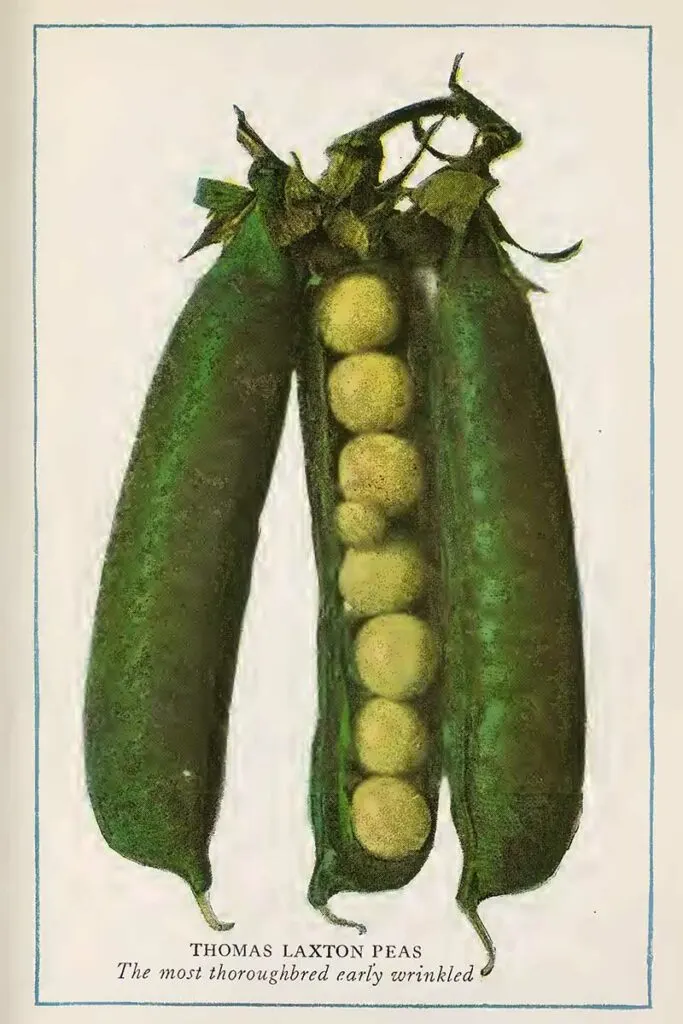
20. Peppers – Vegetable Drawing
“Among these, we find two distinct types — the small ones largely used for seasoning and flavoring, and the larger ones, used for stuffing, as “mangoes.” The large kinds are descendants of a species from East India, while the smaller varieties originated in tropical South America.
For this reason, peppers are distinctly warmth-loving plants and require a long season of growth to reach maturity — from 125 to 150 days from date of sowing seeds.“
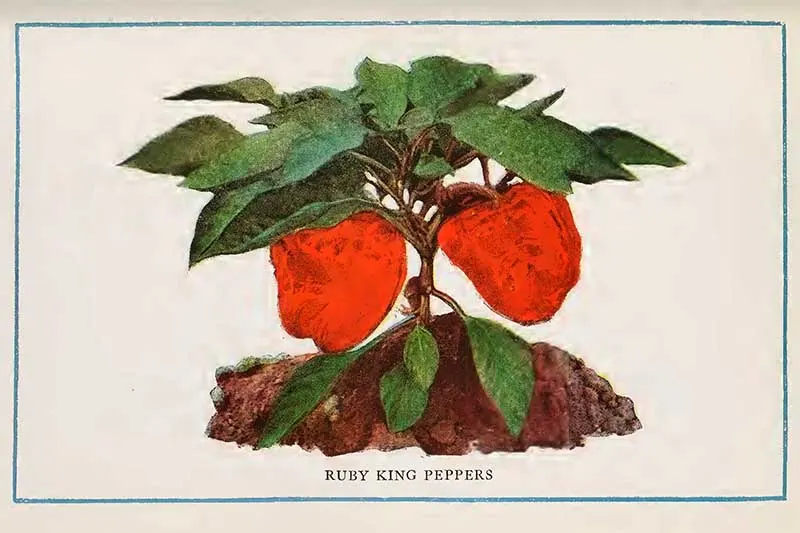
21. Pumpkins – Vegetable Print
“As the largest and rankest growing member of the large gourd family, pumpkins rarely fit into the scheme of the average home garden. They should rather be considered a farm crop and as such, they are generally grown in the cornfield.
Pumpkin plants are warmth-loving plants and will not do well where the nights remain cool throughout the summer.”
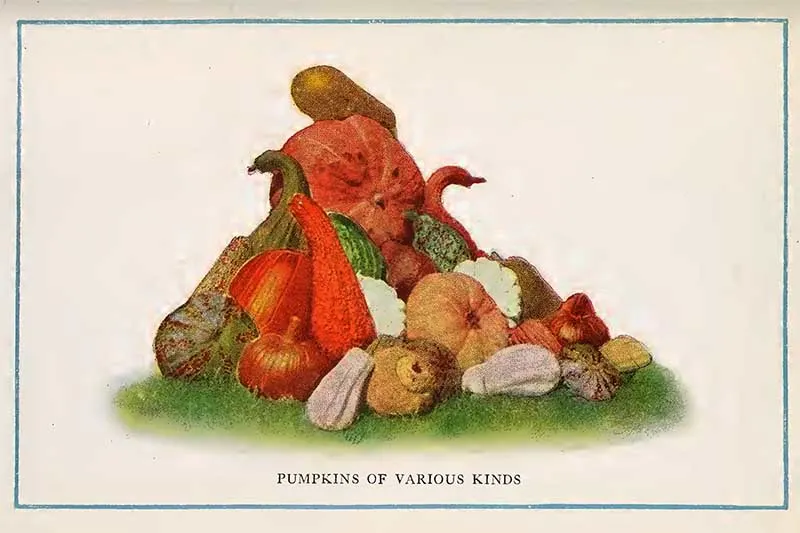
22. Radishes – Illustration
“Over thousands of years, radishes have served for human food. Chinese books recording happenings of more than 3,000 years ago contain references to these crisp early spring delicacies.
Radishes are, perhaps, the easiest vegetable to grow, and anybody having a few square yards of garden space can have them in abundance.“
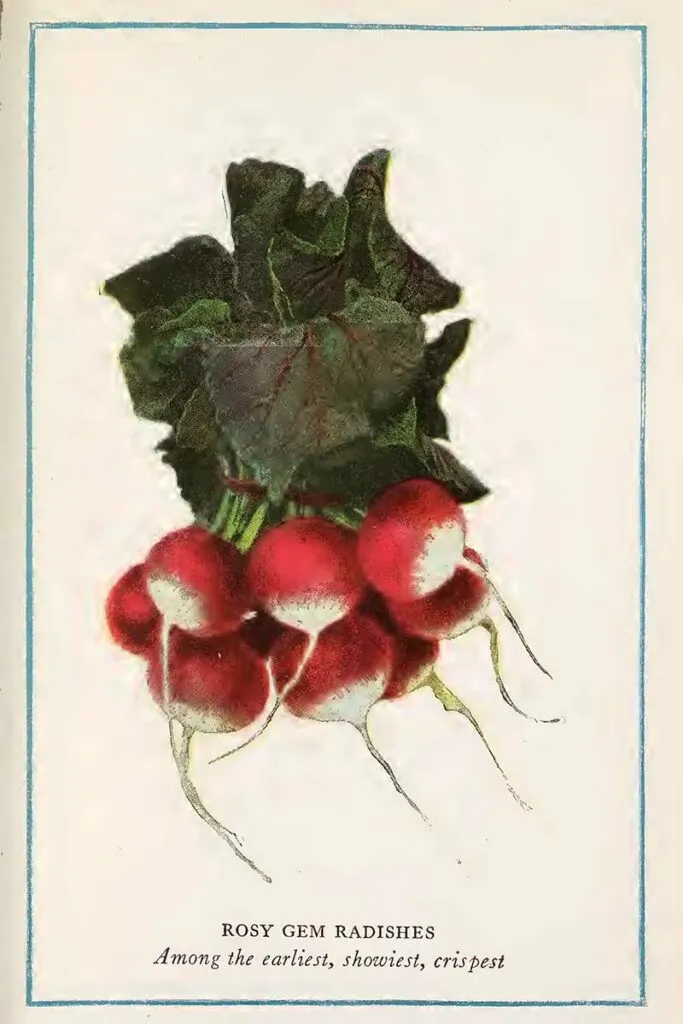
23. Rhubarb – Vintage Illustration
“Who does not relish rhubarb, the delicious spring tonic, served stewed as sauce or in pies? For untold centuries prior to its introduction in Europe, it was esteemed for its medicinal qualities among the natives of Mongolia and China, where it originally came from.
Today a few plants of it may be found in home gardens the world over. The rhubarb plant is a hardy perennial.”
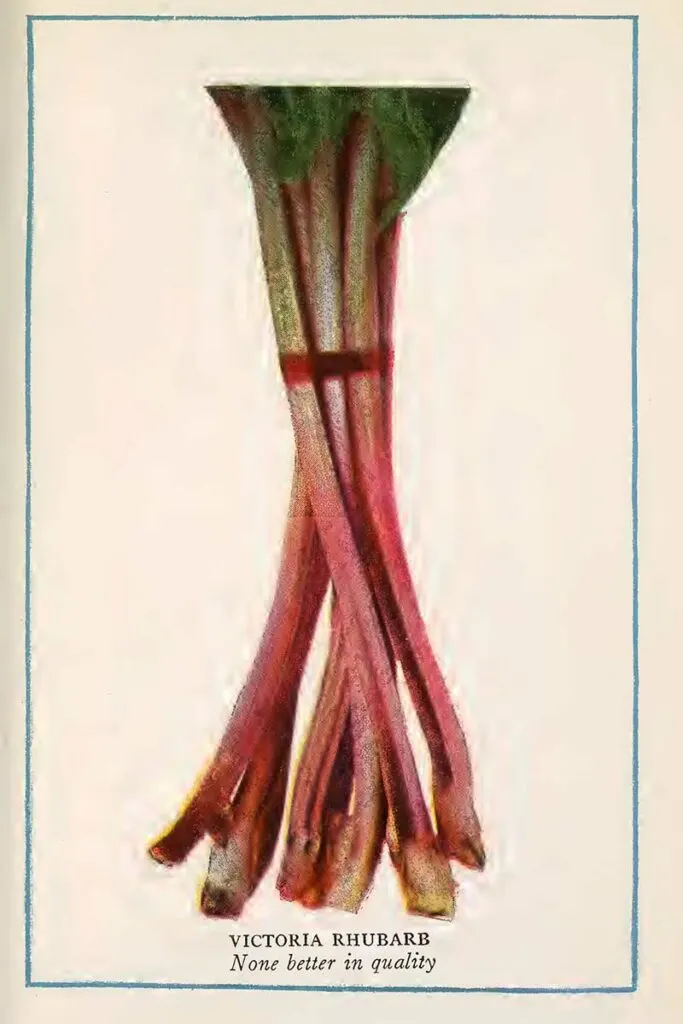
24. Salsify or Oyster Plant – Drawing
“As one of the most dependable and most easily grown winter vegetables, salsify deserves to be grown more generally than it now is. The natives of Mediterranean countries have known and esteemed salsify for centuries as a voluntary gift of nature, since it is found growing wild in Italy, Greece, etc.
In most sections of America it grows like a weed, being not particular as to soil or climate.”
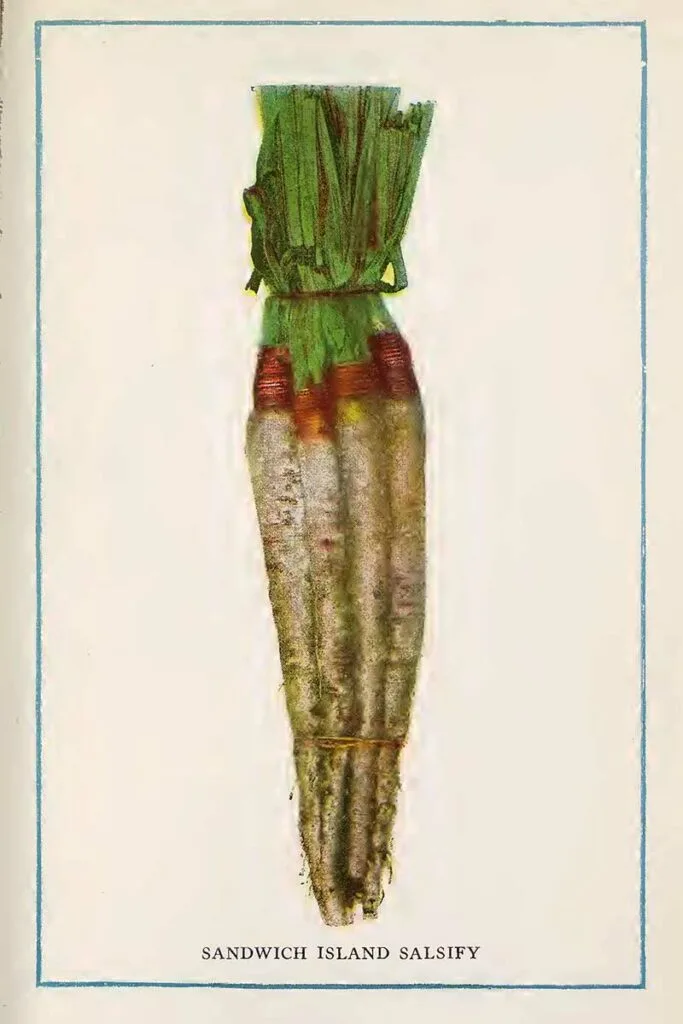
25. Spinach vintage Illustration
” The most popular of all vegetables for “greens.” Since it is very hardy, it may be sown quite early in the spring or in the late summer for fall use.
It deserves to be grown in every home garden since it vacates the space it occupies before warm-season vegetables such as beans and tomatoes are planted and it may be sown again when rows of early vegetables like radishes, peas, beans, etc., have borne their crop.“
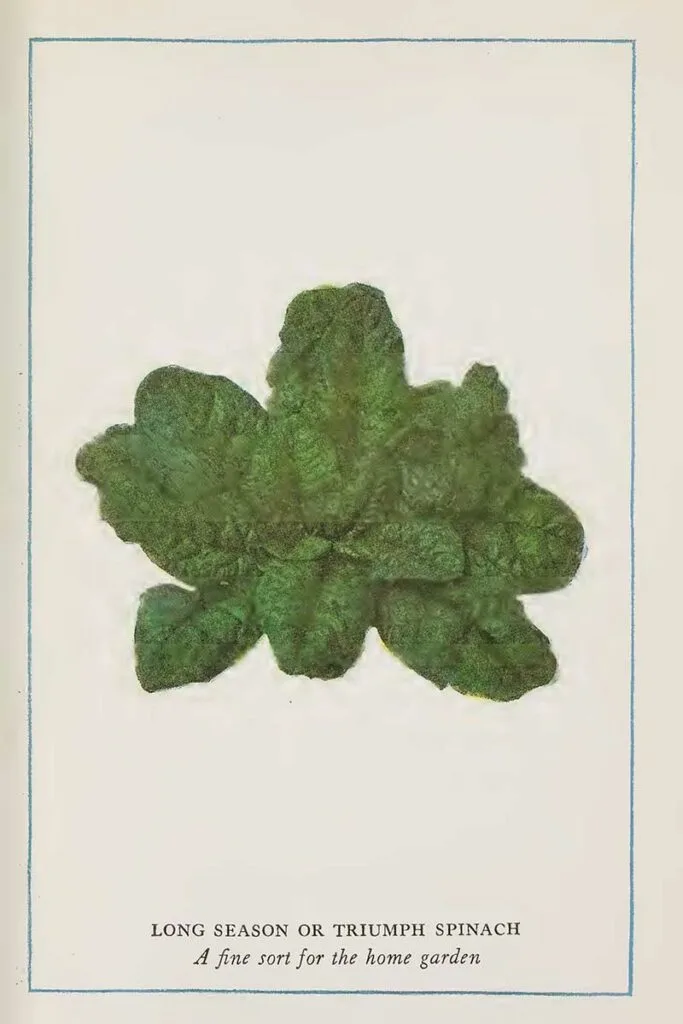
26. Squash Vintage Vegetable Print
“Two distinct types of squash claim the home gardener’s attention — the dwarf or bush form and the very much larger and later “running” or vining varieties.
The last-named should be classed with the pumpkin; in fact, all squashes are really members of the “gourd ’ family and, as such, the strongly “vining” kinds occupy too much space to be deserving of a place in the average home garden.“
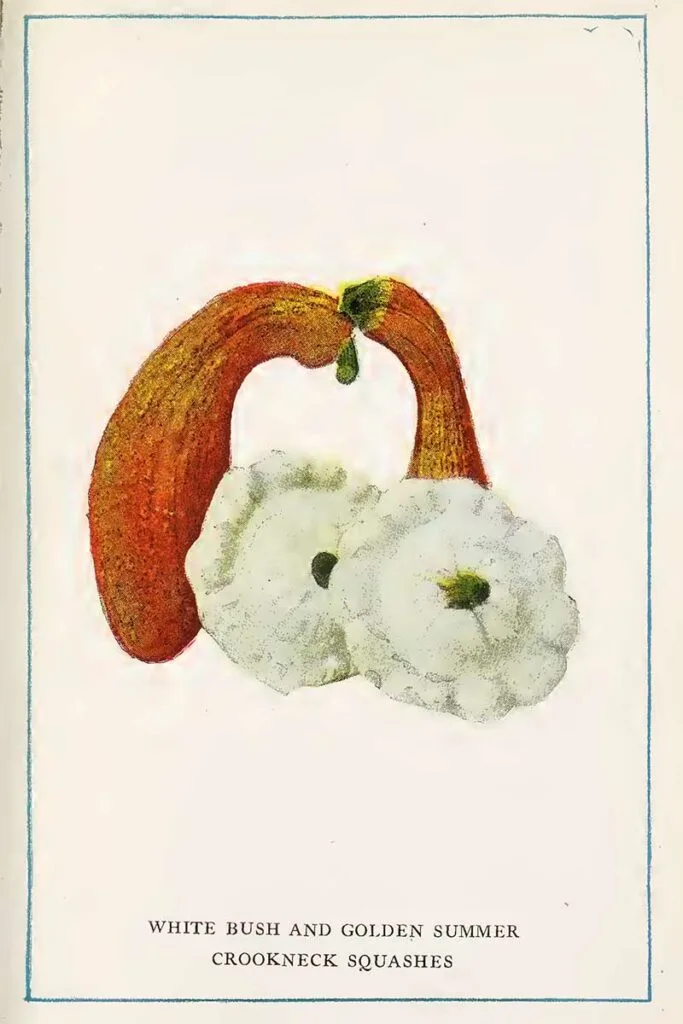
27. Turnips Vegetable Illustrations
“The best-known root vegetable for winter storage. As such it has been known and grown in the most remote times, the first reference to it being made by Greek writers more than 2,000 years ago.
Turnips are members of the cabbage family and, as such, are cool-season vegetables that thrive in almost any soil.”
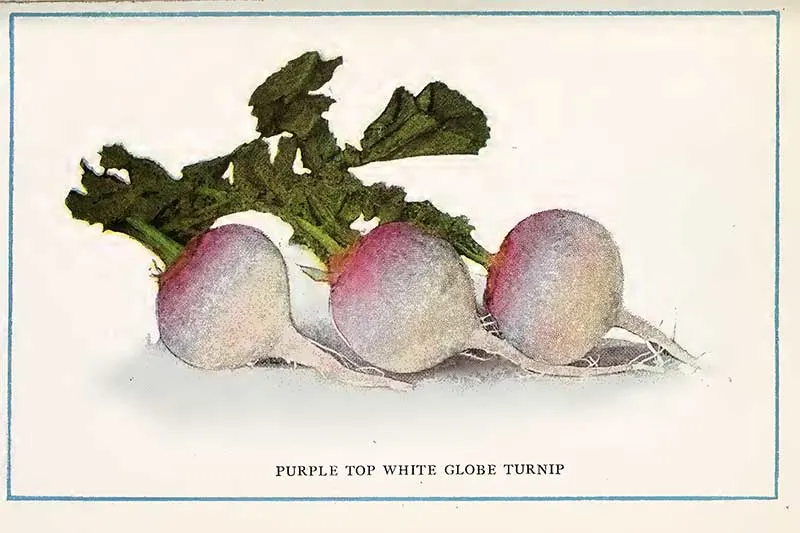
Don’t forget to check out all the other amazing botanical prints on Picture Box Blue. Check out these Charlotte Yonge vintage fruit and vegetable prints.
For more food-related botanical prints, check out the mushroom charts and illustrations, these vintage avocado drawings, and these pineapple drawings. There are also lots of cool vintage food illustrations in Mrs Beeton’s cookbook.
As well as looking great for home decoration, I think these vintage vegetable prints would also be great for making decoupaged placemats.

Donna @ Modern on Monticello
Tuesday 21st of September 2021
These are beautiful. They would look great in a farmhouse or country kitchen. Thanks for sharing them. #HomeMattersParty
claire
Friday 24th of September 2021
Thank you, yes they are perfect for a kitchen.
Rachelle
Thursday 16th of September 2021
Love these vintage veggies!
claire
Saturday 18th of September 2021
Aww, thank you that is nice to hear.